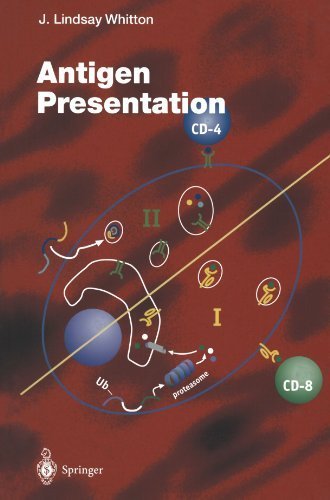
12.07 MB PDF
Preface
Antigen presentation is a subject most often considered at the molecular level, but its results are, of course, also relevant to the whole organism. This compilation of chapters from experts is aimed at reviewing the broad spectrum from molecular, biochemical and pharmacological considerations through to the effects on host immunity and the diseases which result from defects in these pathways. We begin with the class I MHC pathway. Drs. Nandi, Marusina and Monaco review how the endogenous peptides are generated within the cell and how they are transported into the endoplasmic reticulum. There, the story is taken up by Drs. Fourie and Yang, who relate how the complexes are assembled and transported to the cell membrane. Drs. Hudrisier and Gairin then describe the structure ofthe mature class I complex and reflect upon the pharmacology and possible therapeutic use of peptide antagonists. The following two chapters illustrate the consequences of low class I MHC expression. The defects in immune responsiveness which result from globally defective class I presentation are reviewed by Drs. Frelinger and Serody, who describe the resultant defects in the ability to control challenge by different microbial pathogens, while Dr. RaIl argues that the restricted class I expression, seen in certain tissues of normal animals, is most probably beneficial to the host, preventing immunopathologically mediated cell death. Then, the interface between the host and several viral pathogens is addressed in Chaps. 7 and 8; Drs. Sparer and Gooding describe how adenoviruses interfere with antigen presentation and, thus, with the host’s ability to respond appropriately to the virus challenge. Drs. Johnson and Hill show how, even in a single virus family (the herpes viruses), many different approaches to immune evasion have been taken. In Chap. 9, Drs. Nordeng, Gorvel and Bakke provide an excellent review of the MHC class II pathway, demonstrating that the invariant chain has many and varied functions. In the final chapter, Drs. Eibl and Wolff discuss the consequences of a defective MHC class II pathway in transgenic mouse models and in humans.
If you found this book helpful then please like, subscribe and share.
Disclaimer
